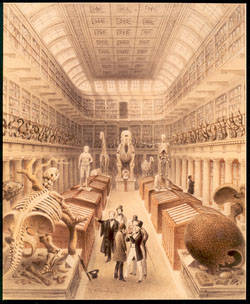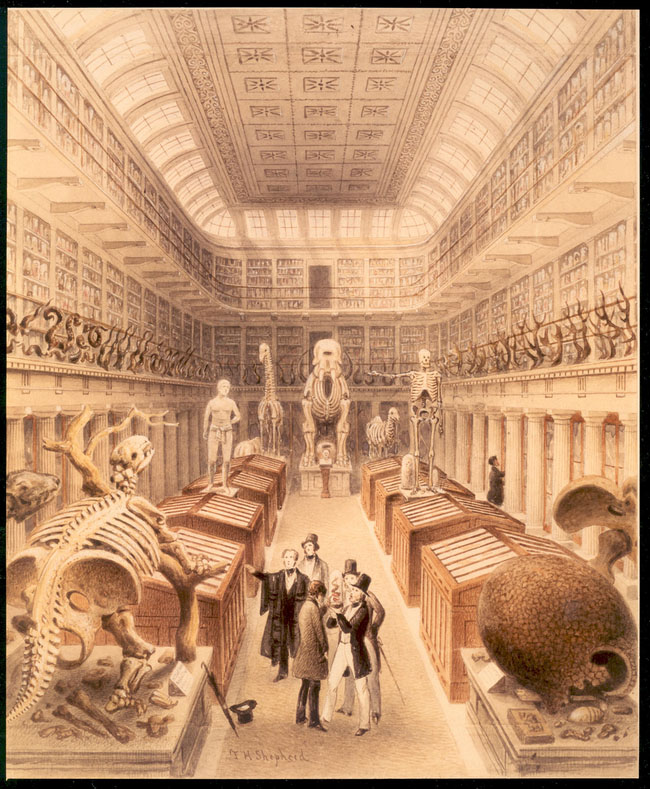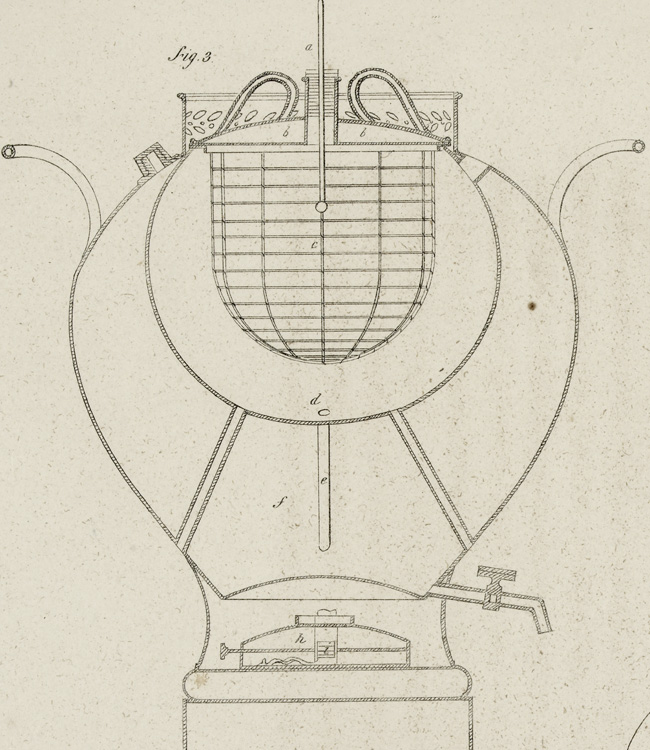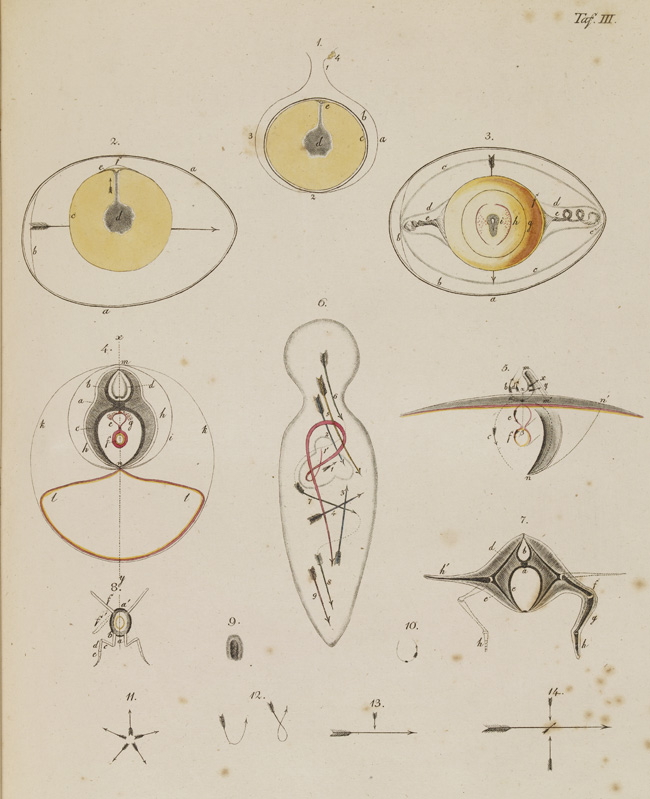Histories of development
Deeper studies of the development of the chick in the egg produced new principles of organization.
After the Napoleonic wars and the first wave of Romantic enthusiasm, the egg lost some symbolic value but gained in empirical interest. At the Bavarian University of Würzburg around 1816, two medical students from the German-speaking Baltic, Christian Pander and Karl Ernst von Baer, took a fresh look at the chick egg, the classical object of study since Aristotle. Pander went first because this banker’s son could afford high-quality engravings and to have an assistant incubate thousands of eggs. Opening these at different times and examining their contents under a magnifying glass, Pander argued that development began, not directly with organ formation, but with the organization of sheets of tissue, or germ layers.
The noble but impoverished von Baer had to wait for an academic post in Königsberg (now Kaliningrad) before he could extend Pander’s research, and even then endured many a sleepless night minding the incubator. In 1828, like the French comparative anatomist Georges Cuvier, von Baer influentially opposed the arrangement of the animal kingdom into a linear series and divided it instead into four separate types. Within each of them, development did not run in parallel but rather diverged.
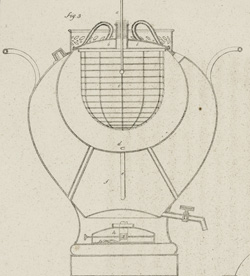
Artificial incubator, 1834 |
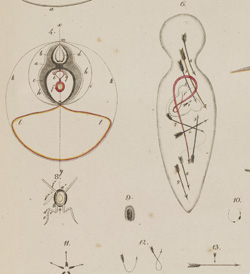
Von Baer’s ideal figures of development, 1828 |

